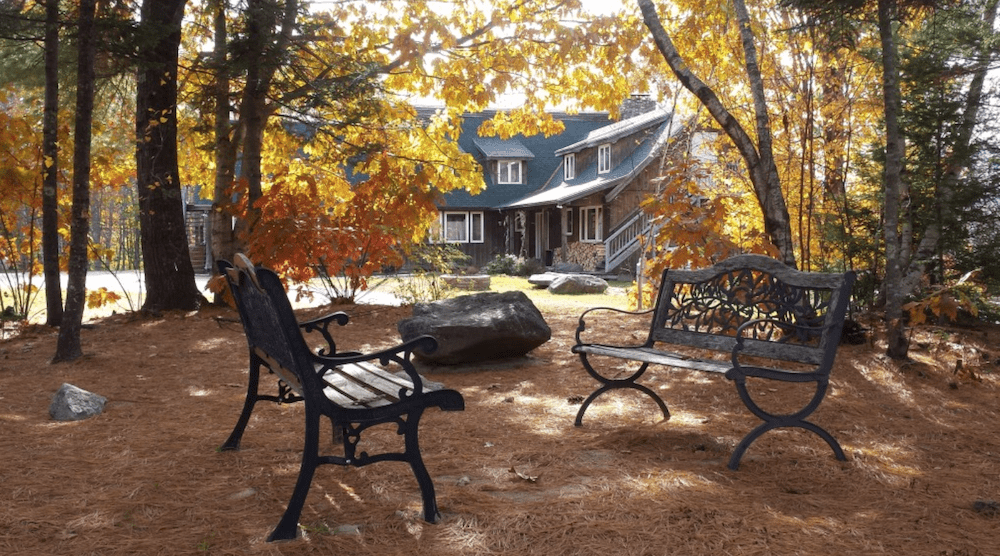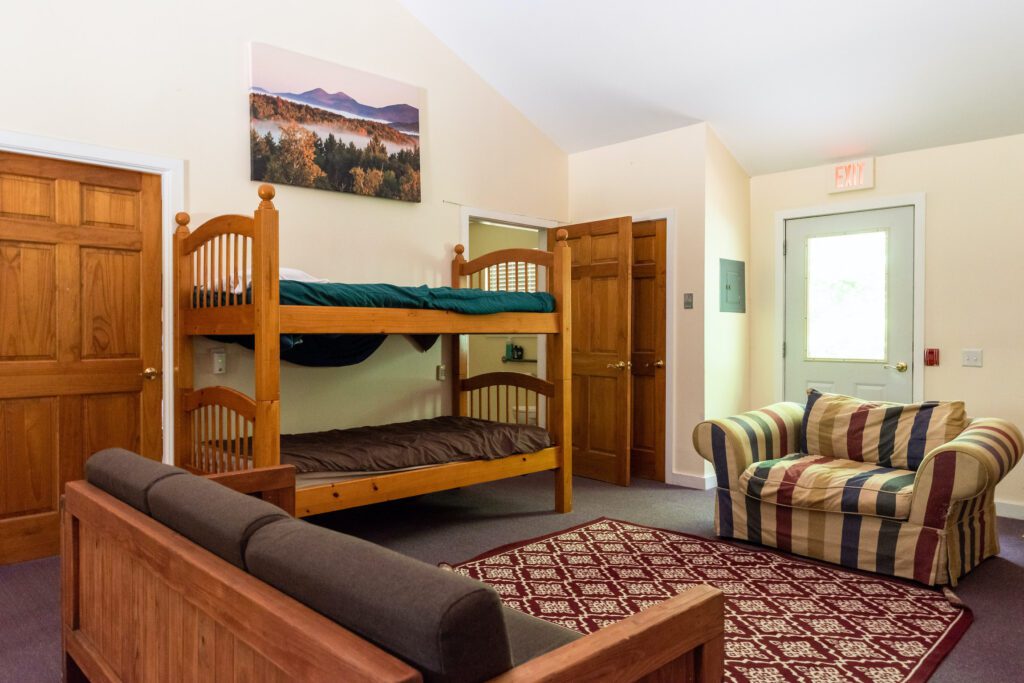The Summit Difference

Program Design & Setting
Summit Achievement combines the best features of a therapeutic program and boarding school by integrating a residential milieu and traditional academic instruction with outdoor adventure-based therapy.
Summit’s Continuum of Care
Our community is made up of two programs: Summit Achievement and Summit Traverse.
Summit Achievement is our primary level of care, with students transitioning each week between our campus and 4 day, adventure therapy expeditions.
Summit Traverse is our short-term, therapeutic boarding school, which is an ideal next step for students graduating from our Achievement program or another similar primary treatment program.
Campus Life
The Summit campus:
- 54 picturesque acres in the Maine western mountains
- Cold River Lodge: a 5,500 square foot facility serves as our campus hub, containing dining space, relaxation and event space, laundry facilities, administrative and counseling space, and a commercial kitchen
- Academic Center fully equipped for educational instruction with 3,500 sq. ft. of classroom, clinical, and medical space
- Comfortable, furnished 4 bedroom cabins with common area and staff present 24 hours
Two students typically share a room and their cabin functions as a team. This environment and the social community it supports facilitates the transition from treatment to home or boarding school, making the transference of skills learned in the backcountry more successful.

Students in Achievement are on campus and attend school on Monday, Tuesday, and Wednesday. On Thursday they depart for a four-day expedition. Adventure activities differ during each week’s expedition, designed to meet the emotional and physical needs of the students. This model encourages students to bring the skills and lessons learned in the backcountry into the social community on campus and practice those skills in a setting that more closely resembles home or boarding school.
Students in Traverse are on campus 7 days a week, with 5 traditional school days. On weekends, Traverse students explore the local area with both backcountry and “front-country” activities including trips to museums, restaurants, cultural events, libraries, climbing gyms parks and community service organizations.
Academic Program
Summit Achievement’s blended learning approach to academics integrates face-to-face teacher facilitated instruction, a computer-mediated curriculum, and self-study with the same therapeutic support used in other parts of the program. Summit is a fully accredited private school. We provide a wide range of courses at both the middle and high school levels. All credits earned are fully transferable to public or private schools.
Students enroll in 3-4 individually selected courses based on their course of study prior to admission. The courses they are enrolled in while at Summit allow them to earn a half credit in each subject upon completion of the course in full.
Available course options include:
- Core Subjects
- Electives
- AP Courses
- Credit Recovery Courses
Our current educational model is structured much like a traditional school and includes:
- 22 instructional hours per week, including evening study halls.
- Four classrooms staffed by a core-subject teacher who provides supervision and instruction, with additional support from a special education coordinator.
- Students use a laptop computer to access the accredited web-based curriculum.
- Multi-sensory curriculum: Material is presented through text, video, hands-on projects, and interactive modules to benefit different learning styles.
Learning is individualized and self-paced, with the student in control of learning modules, time spent on topics, and the methods of displaying mastery of subject matter. Because students are engaged academically throughout their enrollment, they have the opportunity to keep pace and avoid the stress of falling behind in their courses. All the while, students are able to work on improving their academic skills and recover any credit lost so that they will have the smoothest transition possible to their next school setting.
Accreditation
We are fully accredited by the New England Association of Schools and Colleges (NEASC), an internationally recognized accrediting body, and licensed by the state of Maine as a private boarding school. We are able to award 1/2 credits, 1/4 credits and even diplomas when necessary. In addition, we are able to honor work done at other institutions to piece together a quarter or semester and issue combined credit.
In a typical Achievement stay students will earn at least 1.5 credits in English, Physical Education, and our Outdoor Skills Elective. They will also be enrolled in other core classes.
In a typical Traverse stay students will earn 2.5 credits in English Language Arts, Math, Science, Social Studies, and Physical Education.
Family Inclusion
The Summit Achievement therapist serves as the primary contact and communication liaison between student and parent. This master’s level therapist is responsible for fully integrating the student’s parents into their treatment process.
Throughout Achievement, parents are strongly encouraged to visit the campus three times:
- On the day the student enrolls
- Mid-way through the program for an overnight visit
- On the day the student is discharged
On these occasions, the therapist facilitates a face-to-face family therapy session involving both parents and student. In between these in-person family sessions, family therapy continues via telephone or video conference calls. Following a progress update to parents by the primary therapist, the student joins the conference call to discuss treatment goals, specific treatment issues, dynamics of the parent-child relationship and transition planning. In this way, the parent-child relationship and respectful communication is strengthened, paving the way for the student’s successful return home.
In addition to visits and on-site family therapy, parents of students in both Summit Achievement and Traverse are encouraged to participate in our Parent Program. This includes weekly family sessions conducted via video conferencing, parent coaching, support groups, and more.